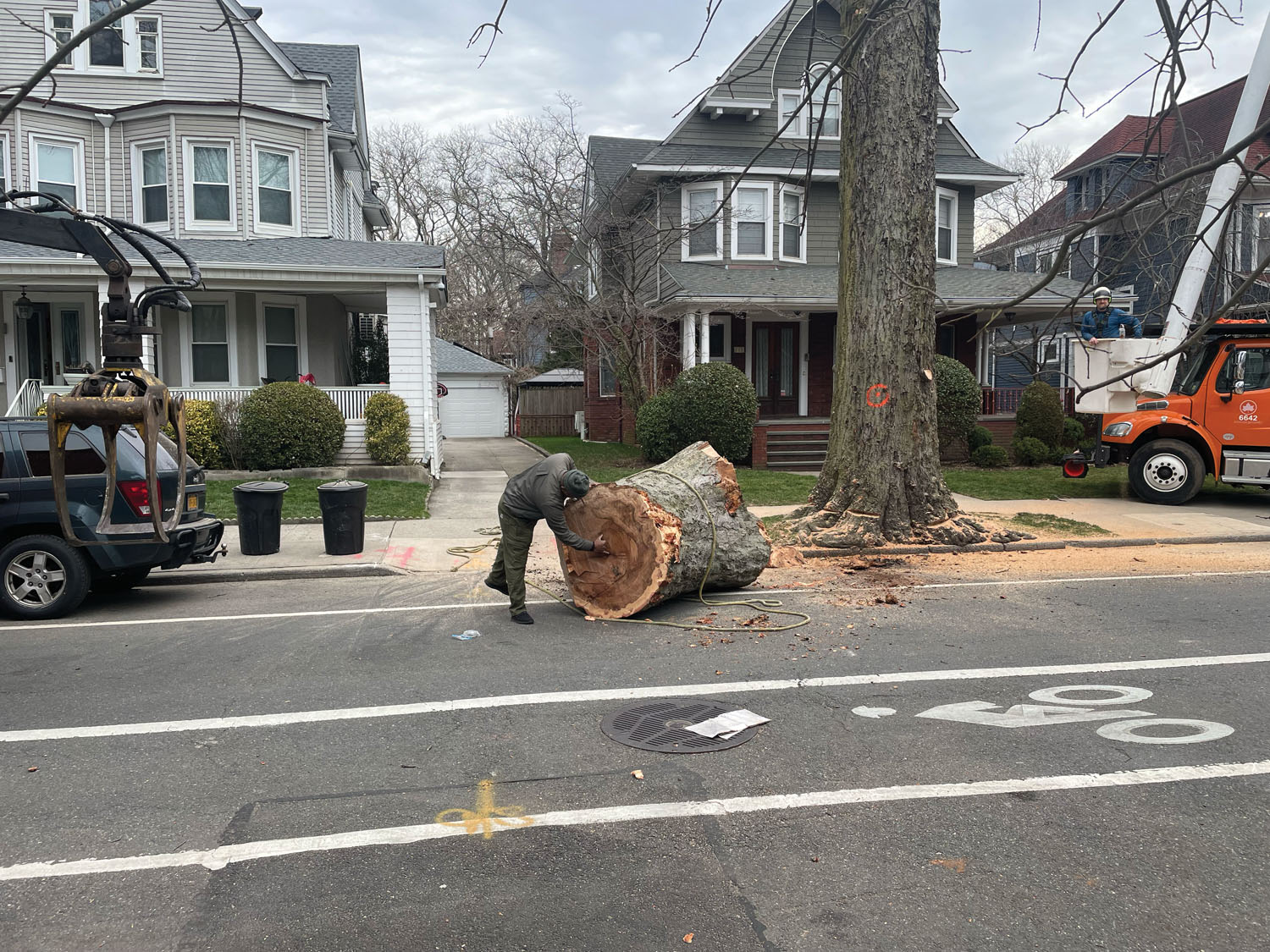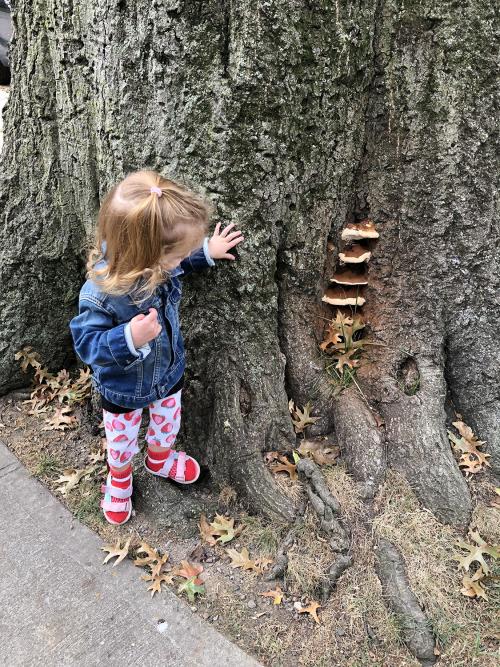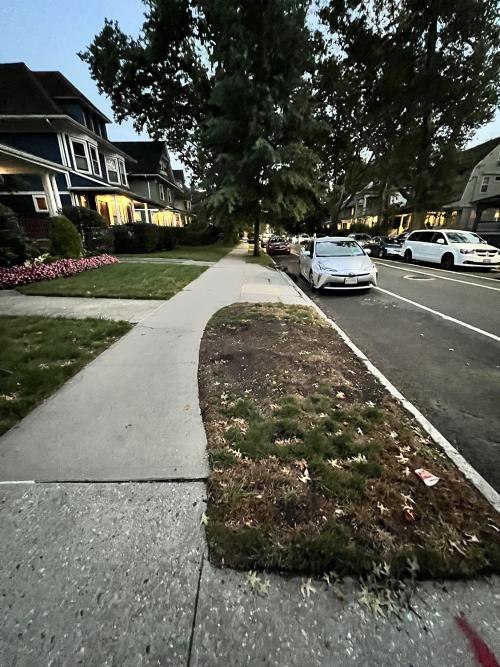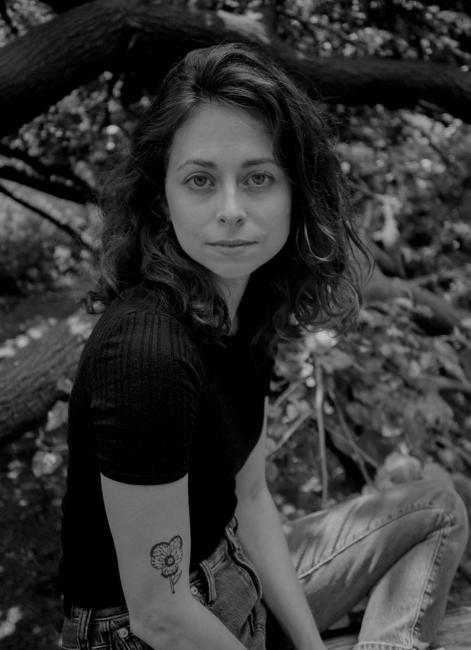
A Tree Grew in Brooklyn

Ditmas Park, Brooklyn, NY
1.

In the late summer, I became obsessed with a particular tree. I was pushing my daughter’s stroller toward the library on Argyle Road when I saw it. The gray limbs were pale in the distance, the trunk goliath. Dust and pollen hung in the dappled light of its canopy.
I had recently moved to Ditmas Park, a picturesque and gentrified pocket of Brooklyn where the gray unfurling cedes to rows of candy-box Victorians with historical markers. In the heat, hydrangeas exploded from the corners of plush lawns and petals wept onto sidewalks in confetti bursts. The cars parked along the wide avenues were shaded by oaks, lindens, maples, ginkgoes, and the elephantine London plane trees with their smooth trunks and broad leaves like sheets of parchment. But this tree towered above the others. It sent a shockwave through the haze, as if I’d stumbled upon an ancient site.
Up close, I steadied myself against the bark—gnarled is a word whose first known use was by Shakespeare, in just this usage case—and saw a small placard nailed to the trunk. In 1983 the city launched the “Tree Label Project.” Anyone could label a tree by mailing a request to 51 Chambers Street, Room 228, and paying four to six dollars per spring-encased, galvanized plaque—black for street trees, yellow for parks—plus forty dollars for the service. This plaque was green, though I found no record of a change. The labeling system was discontinued due to lack of funding, I heard later. I had to arch my neck to read the plaque (it must have lifted skyward over time): pin oak. At the next house was a smaller tree of the same species, no placard.
In the following months, I went out of my way to visit the pin oak as often as I could. I grew wary of the eyes behind the windows of the Queen Annes, the Tudors, the Colonial Revivals. I wondered if the owners of this oak appreciated their tree, and whether they detected my growing sense of proprietorship. But it was as absurd to think of the tree as mine as it was to consider it theirs. A tree knows very little of property lines and placards, even less of who owns it.
2.
Among the New York City Parks Department’s risk criteria for felling a city tree are “likelihood of tree failure,” “likelihood of impact,” and “consequences of impact.” Even without these guidelines, it was clear the old pin oak on Argyle Road was nearing its end. The crown was patchy. Brown leaves wilted from a large branch that hung over the street.
Taking into account species and trunk diameter (55 inches), I put its age at around 165—elderly for a pin oak. It was the largest tree for many blocks. By my estimate, it would have stood here well before the gray house appeared behind it, before the neighborhood filled in, and before the Civil War—when this part of Brooklyn was farmland taken from the Lenape.
One winter, a limb fell a hundred feet and crashed through a porch roof. Neighbors heard a loud crack. Outrage erupted in a Facebook group: The tree was “a timebomb.” I couldn’t help siding with the old oak, who I had begun to see as a neglected maternal figure. On the New York City Tree Map, she was credited with a slim $558.29 in annual “ecological benefits,” including pounds of air pollutants removed—at least some acknowledgment for her services—but liability calculations had finally caught up to her. Trees could pose a real threat in Ditmas Park, where a linden fell in the winds from Sandy, killing two people out walking their dog.
I collected a small shard from the space between the grass and the sidewalk, where sawdust had pooled after workers removed the fallen limb. I took long detours to walk past the tree. Often, I pulled my daughter along in a red wagon. She trundled behind me over the uneven sidewalk. She leaned out to press a small palm to each tree we passed, imitating me. What was that touch to a tree—a millisecond of attention from a small mammal with a heartbeat ticking off the charts?
When I mentioned the tree to neighbors—“Did you see the mushrooms at the bottom of the pin oak by the library? Bad sign, right?”—they didn’t know which tree I meant. Trees are backdrop to the angularity of city blocks, which I walk dutifully despite their absurd certainty, as if the ground isn’t shifting beneath the cement.
3.

One afternoon, I went to visit the old pin oak and found only a wide stump. Days later, the stump was gone too. In its place was a churned-up patch of earth, raw as a tooth socket.
It’s disorienting when a city tree is felled: The light is all wrong, and then you realize what’s missing. Neighbors reported that the city workers who removed the tree had been “proud and excited.” They called the oak the “matriarch of the block.” One forester put her age between 250 and 300 years old, in which case this tree saw not only the Civil War, but also the American Revolution.
A roughly two-inch-thick shell of living wood was all that contained more than fifty inches of rotted core. A photo of the tree’s cross section appeared on a neighborhood Facebook feed. For years I’d thought I was the only one paying attention to it—or, rather, that New Yorkers did care about “the urban forest” (the city’s tree map was evidence of that), but for the wrong reasons. They tracked ecological metrics or measured shade. Real devotion, I thought, casts a net of support all around, one made real by your own care. But I was wrong about my neighbors. Half-buried details reemerged from my memory: a ginkgo in the park adorned with bodega flowers; a solitary walker a hundred yards ahead, pressing her palms to trunks.
A year after the pin oak came down, I went to a block party nearby. A jazz trio piped out a festive “Happy Birthday,” which I realized honored a tree. “Twenty-five years ago they tied a sapling to a straw,” an organizer announced over the PA, and now a weeping willow drifted in clouds over the intersection.
A scientist told me later that growth factor formulas are unreliable. A better way to age a tree, she said, is to count the rings, which I attempted via grainy photos of the old oak’s cross-section. In one image, I reached 124—about the age of the neighborhood—in another, 166. I could maybe get to 200 if I squinted, but gave up. I thought of all I’d written onto the oak—and yet trees resist narrative. Wish a tree “Happy Birthday” and it will say, “I’m a tree.” Thank a tree for its shade, and it will say, “I’m a tree.”

